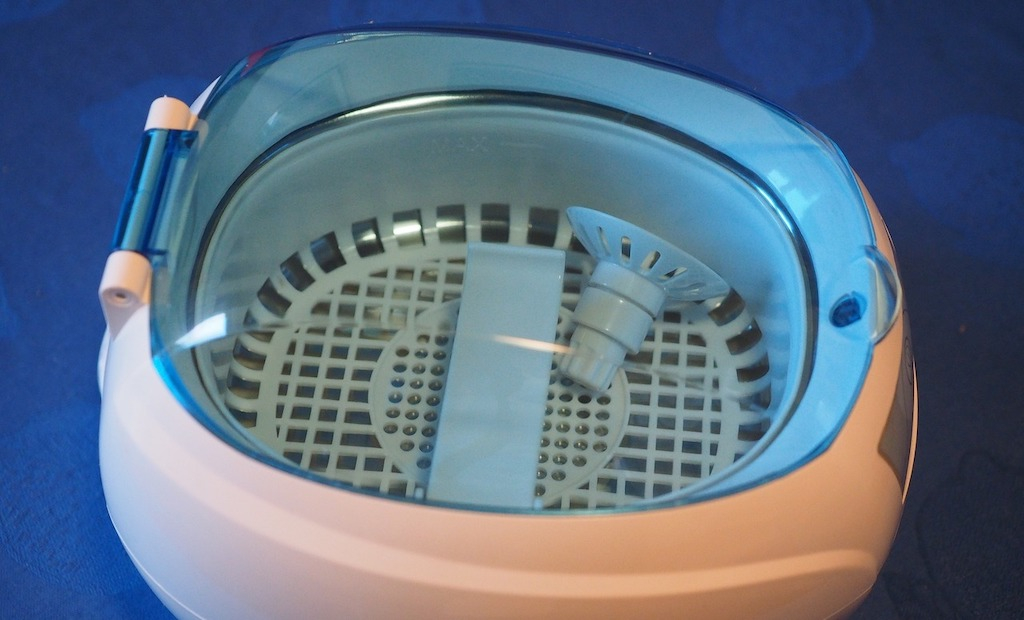New techniques to remove plastic paint using ultrasounds

Ultrasound can be described as a sound that’s at a frequency greater than human hearing. Whilst we cannot hear it because it’s too high pitched, it still very much exists This is anything above 20 kilohertz. The biggest use for ultrasound has been in healthcare, as it allows us to measure distances using the frequency waves and how long it takes for the sound to bounce back – thus giving you an estimation of distance. This is a similar way to how bats navigate instead of using vision through their eyes.
But there has been another use for ultrasound – a cosmetic one. Ultrasound cleaning machines (also known as ultrasonic) can be used to clean materials from jewellery to optical lenses. One common use of this has been in restoring industrial parts by cleaning off the paint and such.
Sure, there are other ways to clean paint and restore metal and plastic by other means: perhaps jet washing for example. Ultrasound however is just more effective in delivering outstanding results. It comes as no surprise that many industries use them, because they cannot be beaten in their speed and thoroughness.
This isn’t just for big business, though. Ultrasound cleaning has been made accessible to everyone, and is often used by those who collect and paint figures. When purchasing expensive pieces, perhaps they are World of Warcraft figures, then painting them is a tender moment. If you mess up, it can feel like it’s utterly irreversible. However, ultrasound paint-stripping techniques could be used so you can start again. This adds a much greater value onto products and materials, which can be restored. It’s even possible effectively clean off rust, hence why it’s so popular with those that have old mechanics or tools that they want to restore.
Removing plastic paint using ultrasounds
There are three key things to consider when removing paint with ultrasound machines. Temperature, frequency and chemical additives are three variables you need to get right in order to safely clean plastic paint using ultrasound. Firstly, the temperature should be 80ºC. This is to ensure that it is hot enough to loosen the paint molecules so they can be removed, but equally not so hot that it would cook, burn or melt the plastic.
Secondly, the frequency will determine the size of the bubbles, and thus their power and impact. Power and frequency have an inverse relationship: when the frequency is high, power is low; when the frequency is low, power is high. Thus, if you can find a 28 kHz ultrasonic cleaning machine, this would be considered highly effective and powerful.
Lastly, choosing the right chemical additives is important. Biodegradable solutions can be used for most paint removal jobs. It is recommended to dilute both acidic and alkaline cleaning solution. The exact amount will depend on the type of plastic or metal.
Some tips on ultrasound cleaning
- Frequency is important. Higher frequencies create smaller but faster bubbles. 40 kHz may be effective for cleaning a lot of products, but very robust and heavy contaminated items may need a lower frequency of 20 kHz. This will create more impactful, larger bubbles (though they’re still microscopic) but at a slower cycle per second.
- The cleaning of ultrasound systems is very important. Some things to consider: lumify system maintenance, cleaning the trackball, cleaning the system air filter, cleaning and disinfecting the AC adapter.
- Setting the right temperature. Between 57ºC and 65ºC is around the right temperature for a lot of cleaning – this is very typical. The higher the temperature, the more dirt and chemical bonds will loosen, making it more effective. This can damage materials such as aluminium though when too high. 82 degrees is a good temperature for removing burnt-on carbon from material surfaces. However, for electronic parts that are delicate and perhaps soldered together, 65 degrees may be around the maximum you would use.
Why a good ultrasonic cleaner will pay for itself
Nobody wants to invest money in new tools. We are often afraid that we’ll use them a couple of times and then they’ll be forgotten about. Ultrasound cleaners are a little different, though. They’re more of an investment than regular tools. The reason for this is because they can be used to maintain and upkeep the value of your current assets.
If you have a gaming PC for example. After a certain amount of years, you will find it is built up with dirt, dust and so on. Placing these in an ultrasound cleaner can revive what seems to be a broken logic board. If you look at a board under a microscope, it’s surprising how dirty they get even when they appear clean. This can really hinder performance, and an ultrasonic can triple the life expectancy of such components.
It can also be used as a means to make money, not just maintain assets. You could purchase old, branded, rusty knives for cheap and restore them easily. There are other means to restore them, but ultrasonic is so easy and fast.
The editorial unit
























Facebook
Twitter
Instagram
YouTube
RSS